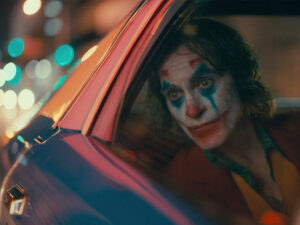The introduction of color in motion films in the early 20th century was set to enthrall audiences like never before. While not a new concept — the ancient Egyptians studied the effect of colors on human mood and emotion — it wasn’t long before filmmakers were using color psychology in movies to aid storytelling.
What is color psychology in films?
Color psychology in films is the exploration of the world of images and how it affects human perception. It reflects the underlying emotional undercurrents that run beneath the surface of the narrative. The colors used in films are also designed to enhance or define the characters and their dramatic needs.

A color wheel is a visual representation of colors arranged according to their chromatic relationship.
Although music and onscreen action have long been considered the more powerful components of the cinematic experience, the use of color to depict characters and film sets is an equally compelling, if not more nuanced, tool in the right hands.
Some directors like Wes Anderson have embraced the entire spectrum of color, making their work a visual treat and an easily recognisable trademark while others like Fincher depict their work in grittier tones. The absence of color is an equally capable mechanism employed to convey different emotions. Memento, for example, employs a black and white color to communicate a separate timeline while Schindler’s List uses no color on screen.
Let’s dive right into this fascinating world of how color is used in films to tell a story and the impact of color psychology in cinema.
Watch: Visual Storytelling & The Power of Color in Film
History of color theory in films
In 1895, soon after the movies were invented, there was a possibility to create color images. It was achieved by hand-coloring, stenciling, tinting, and toning. But the entire process was so tedious that only selected frames were colored.
In the 1930s full-scale color production had begun in Hollywood and by 1937 mainstream production started using color.
However, by 1937, with the release of films like Victor Fleming’s The Wizard of Oz and Gone with the Wind, and John Ford’s Drums, the use of colors in films awed audiences.
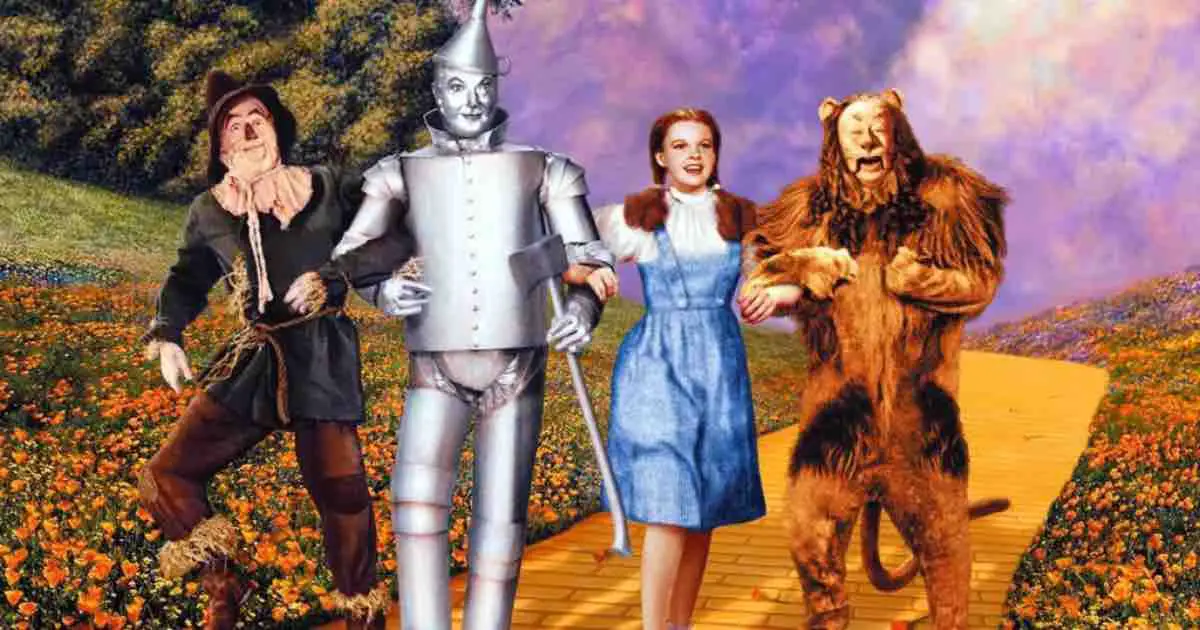
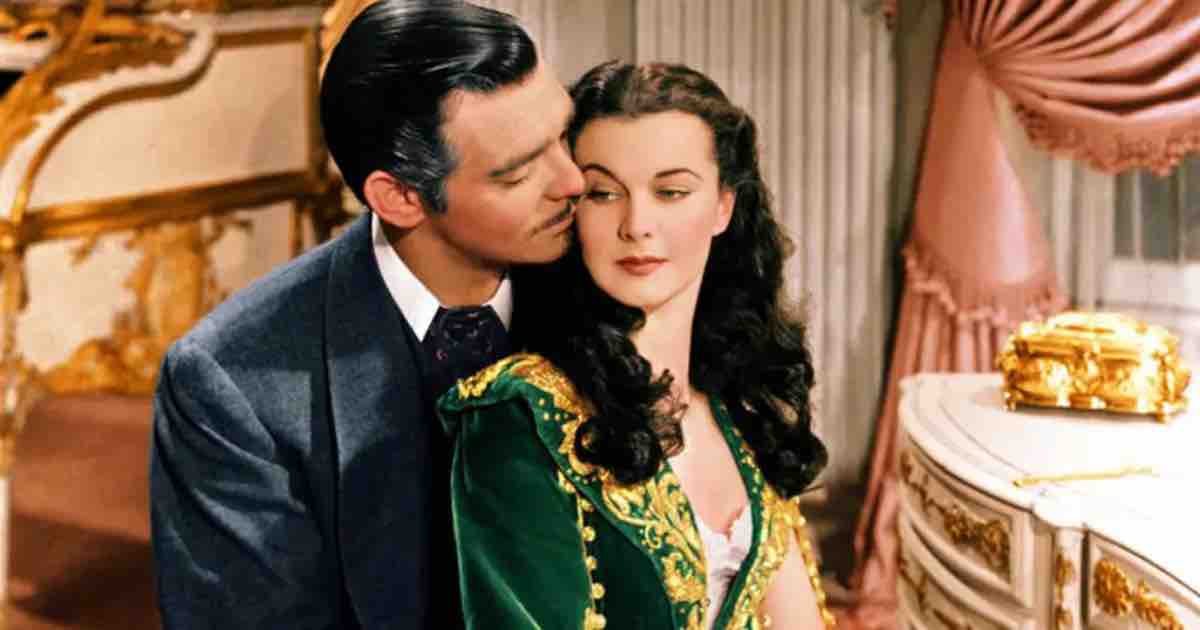
The 1940s marked a golden phase in the history of color films as Technicolor and Eastman introduced multi-layered color film stocks that essentially replaced the earlier Technicolor system.
Today color has ascendancy over most of the films made worldwide. And with the advent of the digital medium, the language of color has attained new heights helping filmmakers redefine cinema.
The psychology of different colors in film
Here are examples of colors and the kind of emotional responses they are generally associated with:
RED is associated with love, desire, violence, aggression, power.
In Quentin Tarantino‘s Inglourious Basterds, the color red defines the character of Shosanna Dreyfus (Mélanie Laurent) as a lady who is determined to have her vengeance against the Nazi leaders.
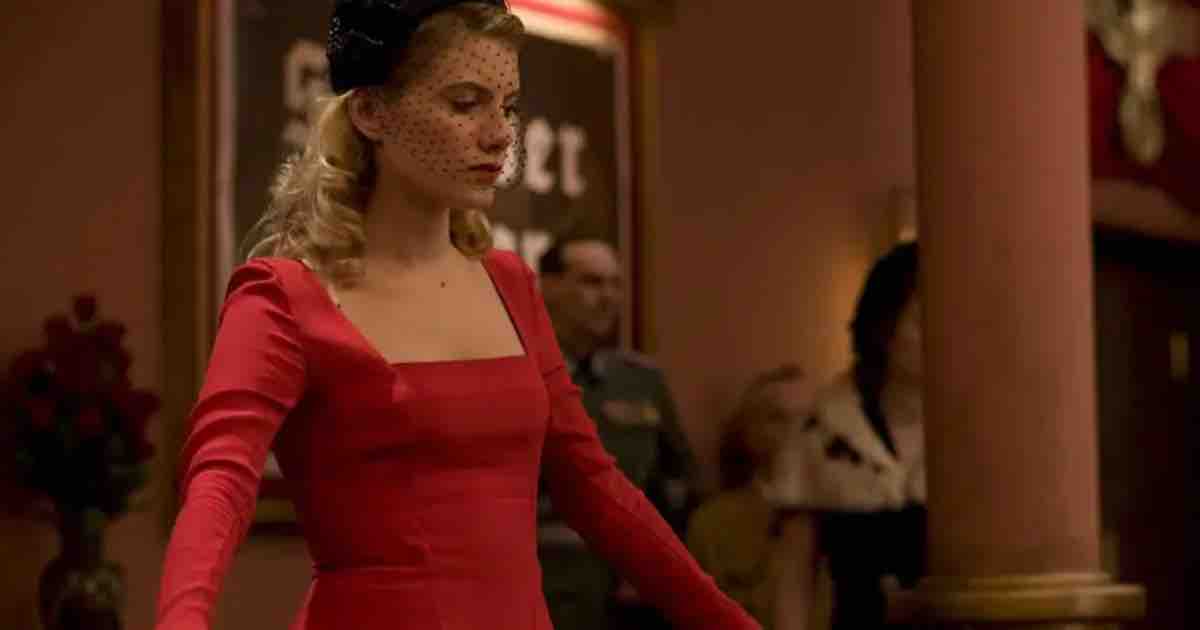
ORANGE denotes warmth, enthusiasm, friendliness, happiness, vibrance.
In Ridley Scott’s The Martian, the color ‘orange’ symbolizes the firm resolve of astronaut Mark Watney (Matt Damon) to return to Earth after being stranded on a hostile planet.

YELLOW signifies madness, illness, insecurity, obsession, wisdom, betrayal.
In Todd Phillips’s Joker, mentally troubled comedian Arthur Fleck‘s (Joaquin Phoenix) state of mind is expressed with the color ‘yellow’.

GREEN is associated with environment, immaturity, corruption, ominous, darkness, envy.
In Bong Joon Ho’s Parasite, the lush green represents the conniving schemes of the destitute Kim family to occupy a position in the wealthy household of Park through lies and deceit.

BLUE is associated with cold, depression, loyalty, peace, passivity, calm.
In Paul Verhoeven’s Basic Instinct (1992), the calm interior of the manipulative and seductive novelist Catherine Tramell (Sharon Stone) is personified with the color blue.

PURPLE is associated with fantasy, ethereal, erotic, royalty, mystical, power.
In Nicolas Winding Refn’s The Neon Demon (2016) the color purple focuses the viewer’s attention to intense jealousy generated within the fashion industry due to the beauty and youthfulness of a model, Jesse (Elle Fanning), in Los Angeles.
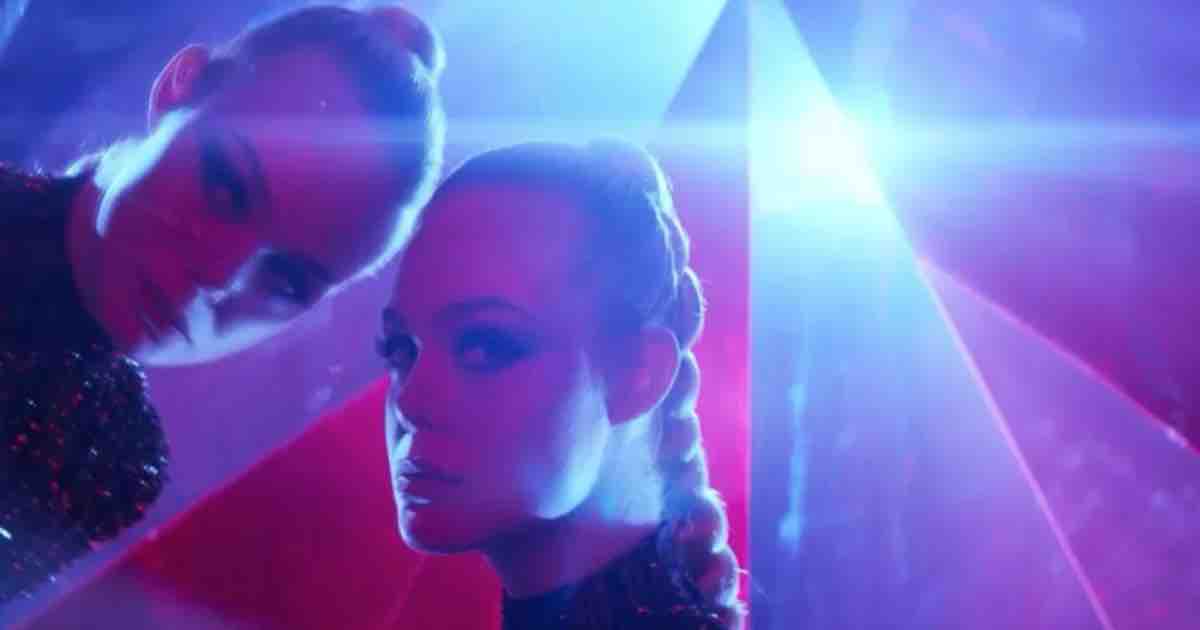
PINK is associated with innocence, sweetness, femininity, charming, delicate, and beauty.
In Greta Gerwig’s Lady Bird, the pink color of the plaster on Christine McPherson‘s (Saoirse Ronan) arm depicts the thoughtful and impulsive character of the 17-years-old protagonist who is also sharp and naïve in equal measure.
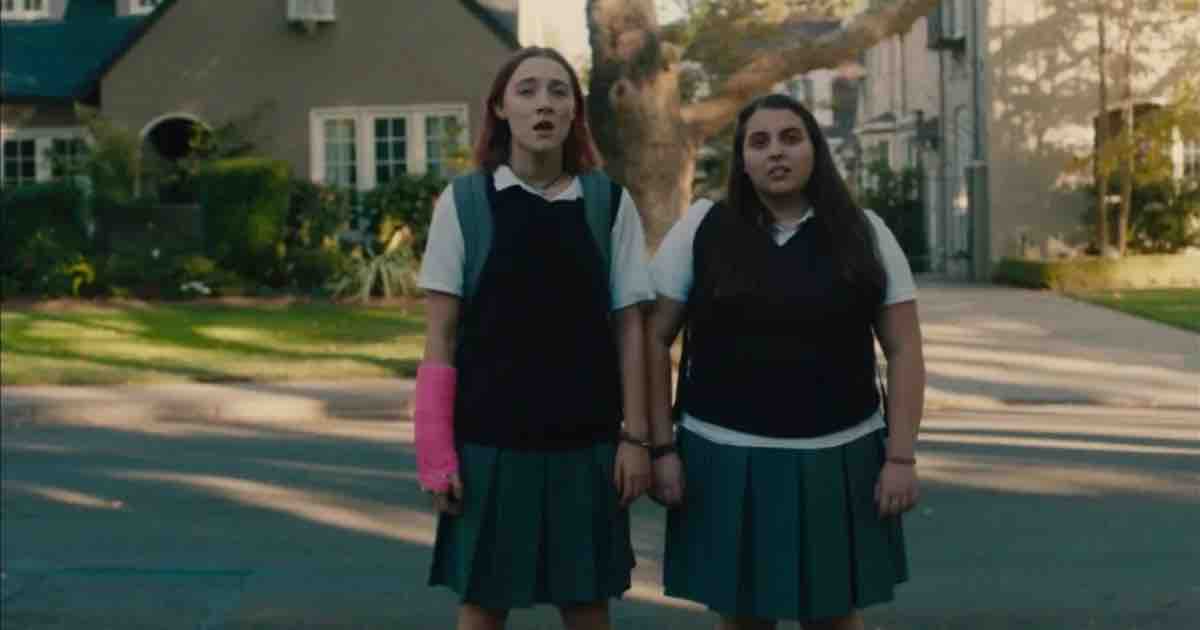
Color themes in films
As the language of cinema evolved, certain color combinations have been established to arouse and define an emotive impact.
Monochromatic
The monochromatic color themes use a single color throughout, along with variations of the color’s shades, tints, and tones. A monochromatic palette is minimalist, and visually unobtrusive.
In Rodrigo Cortés’ Buried (2010), Paul Conroy (Ryan Reynolds), a U.S. truck driver working in Iraq, wakes up to find himself in a coffin buried under the ground. The monochromatic color scheme of green is utilized to enhance the feeling of claustrophobia and entrapment by the protagonist.
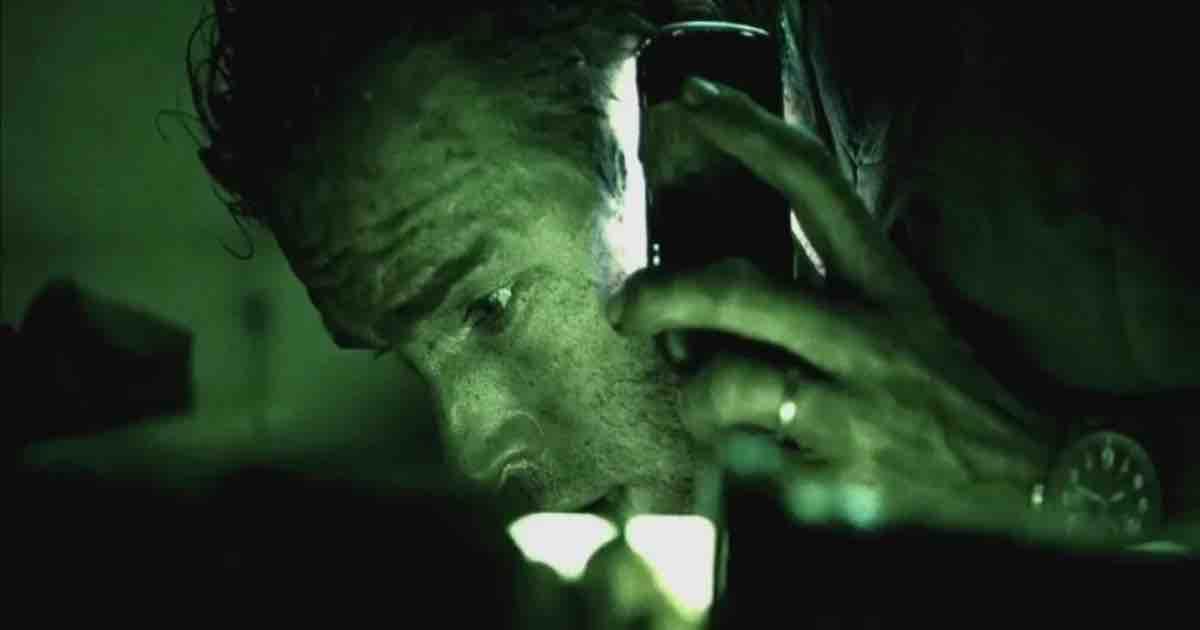
Analogous
The analogous scheme is made of colors that sit adjacent to one another on the color wheel. An analogous palette is harmonious and calming since the colors are related in hues.
Alejandro González Iñárritu‘s Babel ends with a cathartic moment shared by two different parents with their respective children.The judicious use of analogous color schemes is used to accentuate the fatherly moments in different geographical locations.
The scene featuring Richard Jones (Brad Pitt) in Morocco uses an analogous color scheme of blue.
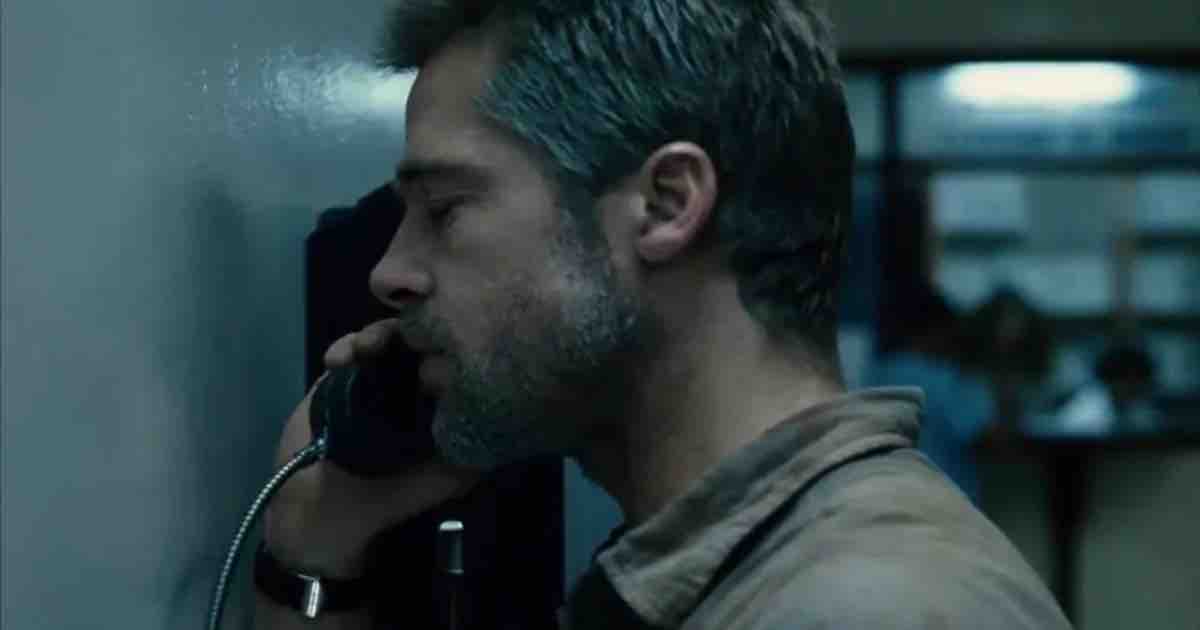
Whereas, the scenes featuring Chieko Wataya (Rinko Kikuchi) and her father Yasujiro Wataya (Kōji Yakusho) in Japan use an analogous color scheme of orange on the skin tone.
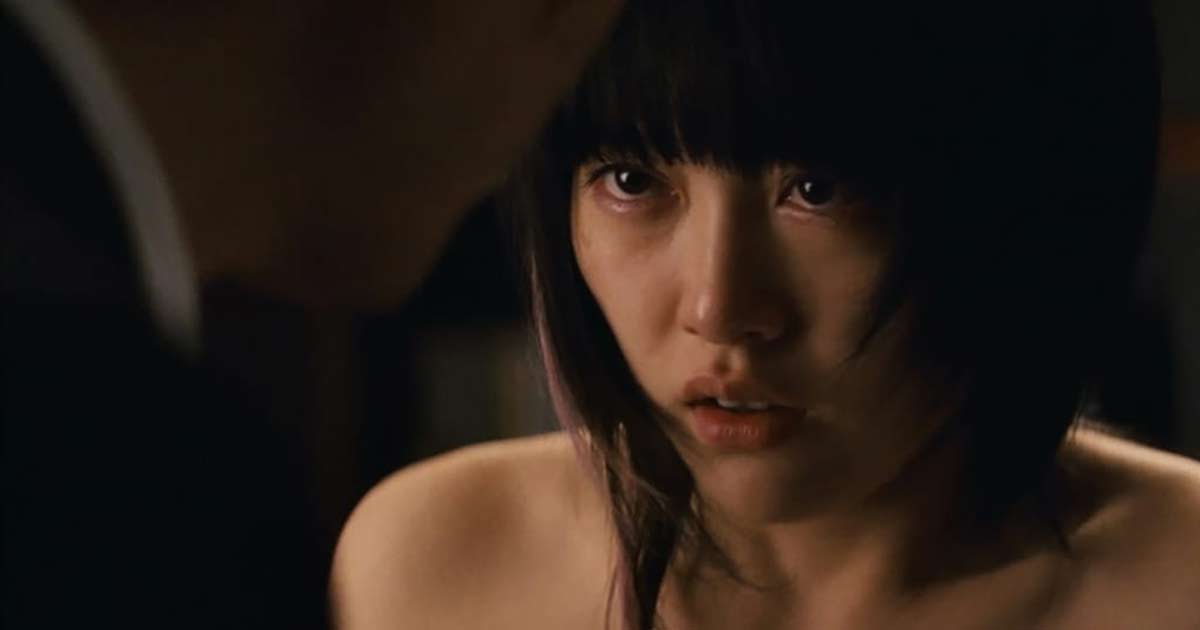
Complementary
The complementary scheme is made of colors that stand opposite to each other on the color wheel. When placed adjacent to one another, the complementary colors make each other appear brighter. When mixed, they have the opposite effect, neutralizing or graying) each other.
In the infamous museum scene from Brian De Palma’s Dressed to Kill (1980), the complementary color scheme of off-white apparel by Kate Miller (Angie Dickson) and black apparel by the mysterious stranger gives us a feeling of the impending doom.

Triadic
The triadic color scheme uses three colors equally spaced around the color wheel. A Triadic palette is vivid, well-balanced and there is ample color contrast and a natural color balance.
In Paul Thomas Anderson’s Inherent Vice (2014), the triadic color scheme consists of black, red, and olive green. It reflects upon the plight of the stoner investigator, Larry “Doc” Sportello (Joaquin Phoenix), who has despondently gone astray in solving a case that is beyond his faculties.
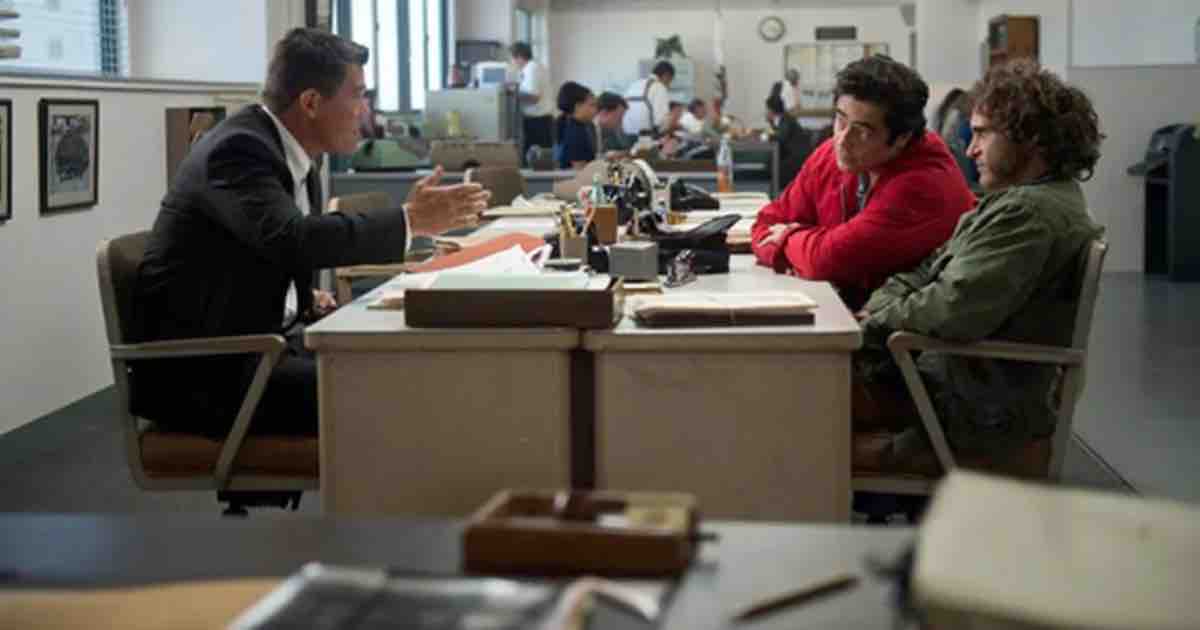
Examples of movie palettes in films
Understanding the psychology of color in film is part technique and part instinct. The use of a particular color palette is not a whimsical decision, but a conscious artistic choice. Here are 10 films and their choice of color that made for better storytelling:
1. Nocturnal Animals

Tom Ford’s Nocturnal Animals is a gritty psychodrama that follows a ‘story-within-a-story’ narrative pattern. Susan (Amy Adams) receives a manuscript of a yet-to-be-published novel from her ex-husband Edward Sheffield (Jake Gyllenhaal). As she reads the manuscript, we’re introduced to a horrific tale of a family assaulted by rednecks in rural west Texas. In both real and fictional worlds, the red color palette is meant to convey damaged emotions and revenge.
2. Can You Ever Forgive Me
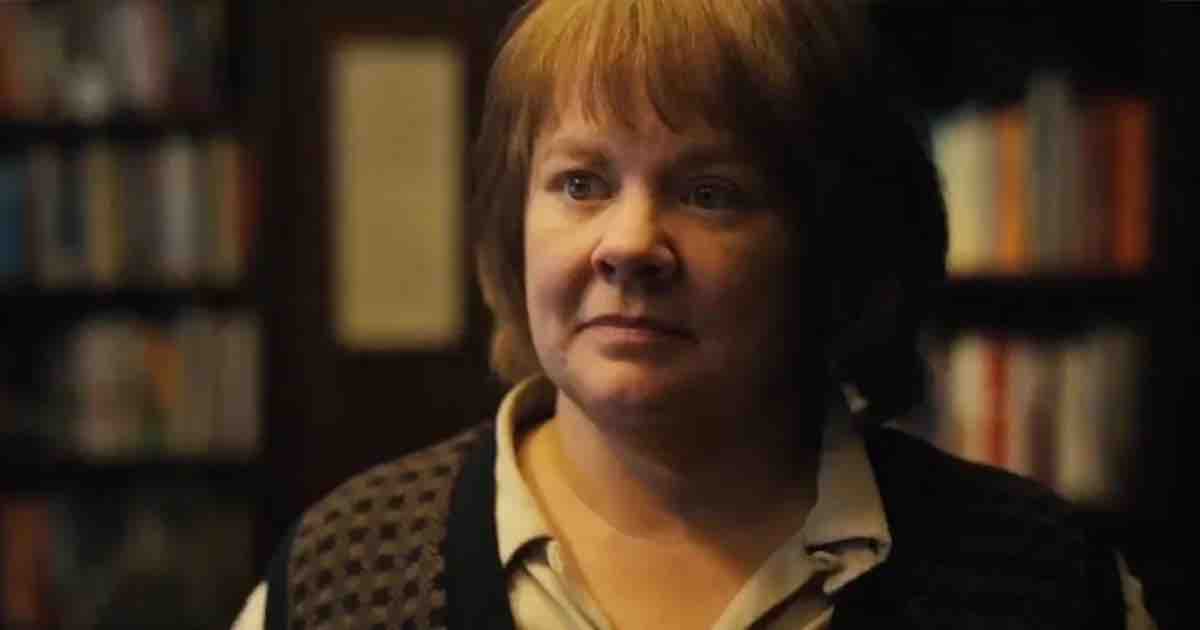
Marielle Heller’s Can You Ever Forgive Me narrates the tale of Lee Israel (Melissa McCarthy) who misuses her writing talent to sell fake celebrity memorabilia. The quintessential use of yellow palette defines the daring character of Lee embedded with dubious intention.
3. Nightingale

A period film set in 1825, Australia, Jennifer Kent’s Nightingale depicts the plight of a young Irish woman, Clare Carroll (Aisling Franciosi), who sets out to seek vengeance for her family. The green color palette is used to underline the atrocities unleashed by the British officers upon the Aboriginal community as well as the savage act of revenge.
4. The Irishman
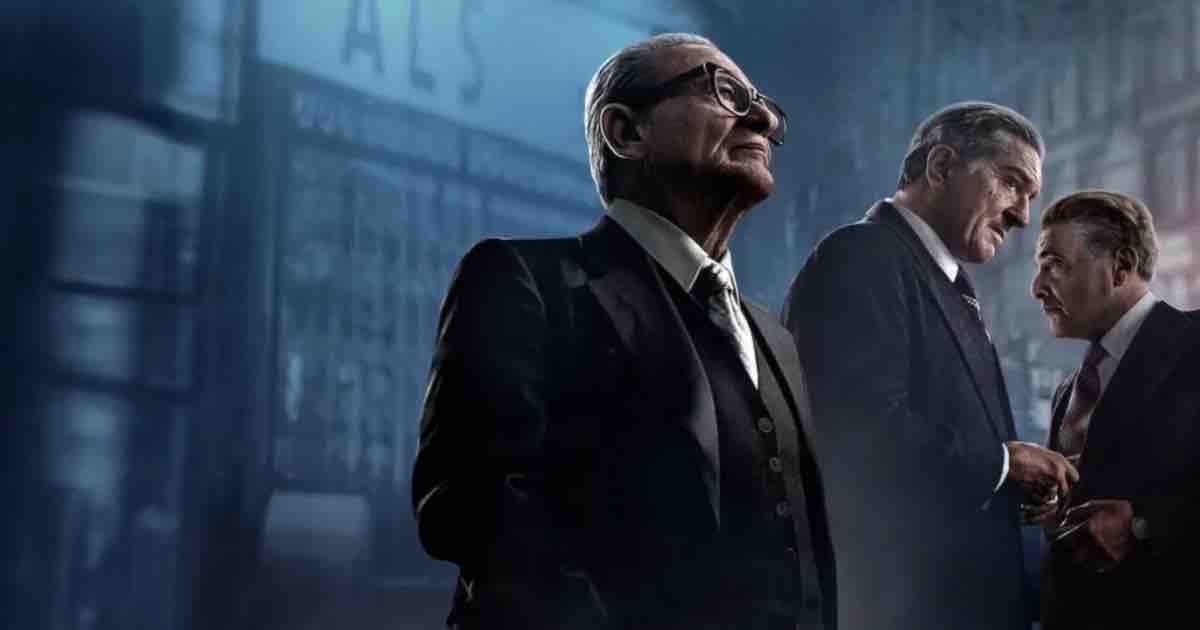
The blue color palette in Martin Scorsese‘s The Irishman is used perfectly to accentuate the theme of loyalty versus betrayal, identity politics, and moral crisis in America of yesteryears.
5. Marriage Story

The orange color palette in Noah Baumbach’s Marriage Story highlights the warmth and affection shared by the three primary characters amidst the ongoing custodial battle.
6. The Assistant
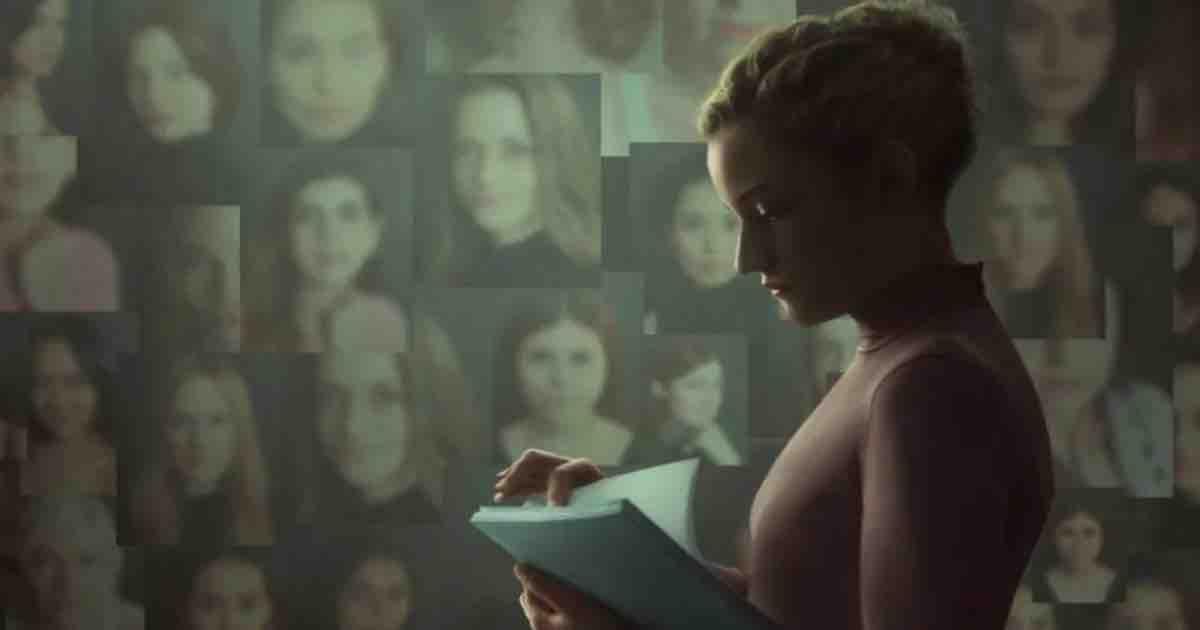
The washed-out color palette in Kitty Green’s The Assistant matches the film’s subdued handling of knotty subjects such as gender dynamics, patronizing and disrespectful behavior, effect of toxic masculinity and the necessity of compromise at the workplace.
7. The Father
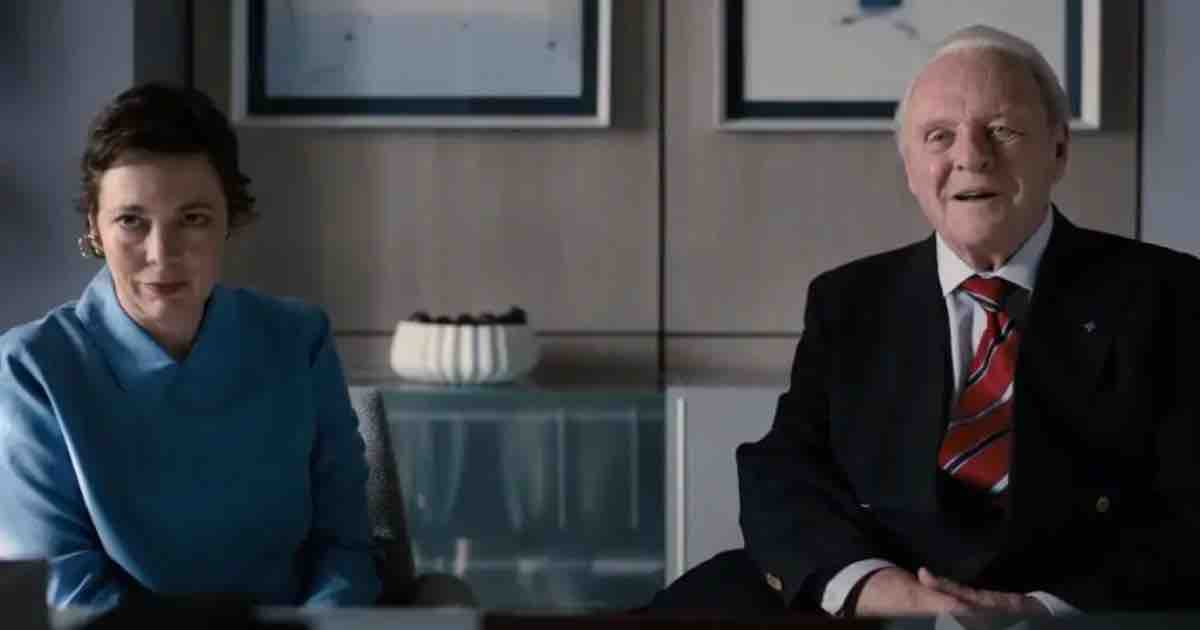
In this scene from Florian Zeller’s The Father, the discordant color of blue and black within the palette contradicts the natural order of tonal value. Hence, it depicts the terrifying perspective of Anthony (Anthony Hopkins) who is in a serious pathological state with his progressive cognitive decline.
8. Promising Young Woman
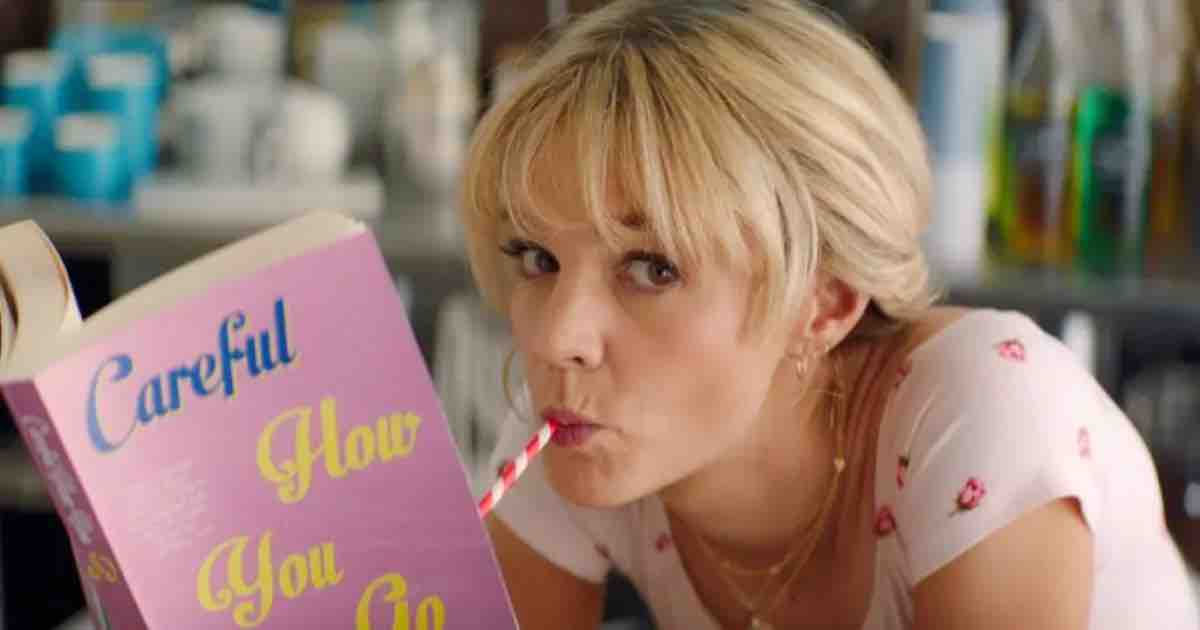
In Emerald Fennell’s Promising Young Woman the protagonist Cassandra (Carey Mulligan) leads a double life. She is a calm woman working in a coffee shop during the day. By night, she is pretending to be a drunk woman who teaches morality to sly men. The pink color palette highlights Cassandra’s persona as blooming and feminine during the daytime. Whereas the yellow color palette highlights her persona as a woman on a mission during the night.
9. The Queen’s Gambit
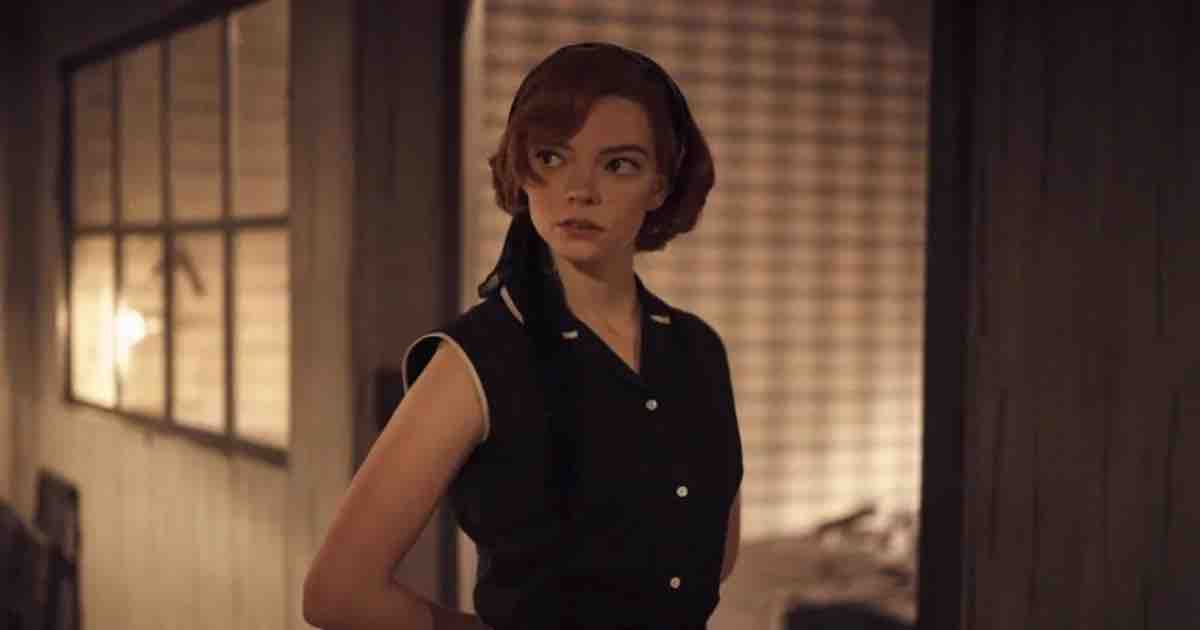
Scott Frank’s Netflix miniseries The Queens’ Gambit is the coming-of-age tale of Beth Harmon (Anya Taylor-Joy) who ascends in life by discovering the game in an orphanage basement and reaches the zenith of the chess world. The yellow color palette illustrates her bravery, persistence, integrity, and curiosity.
10. Mare of Easttown
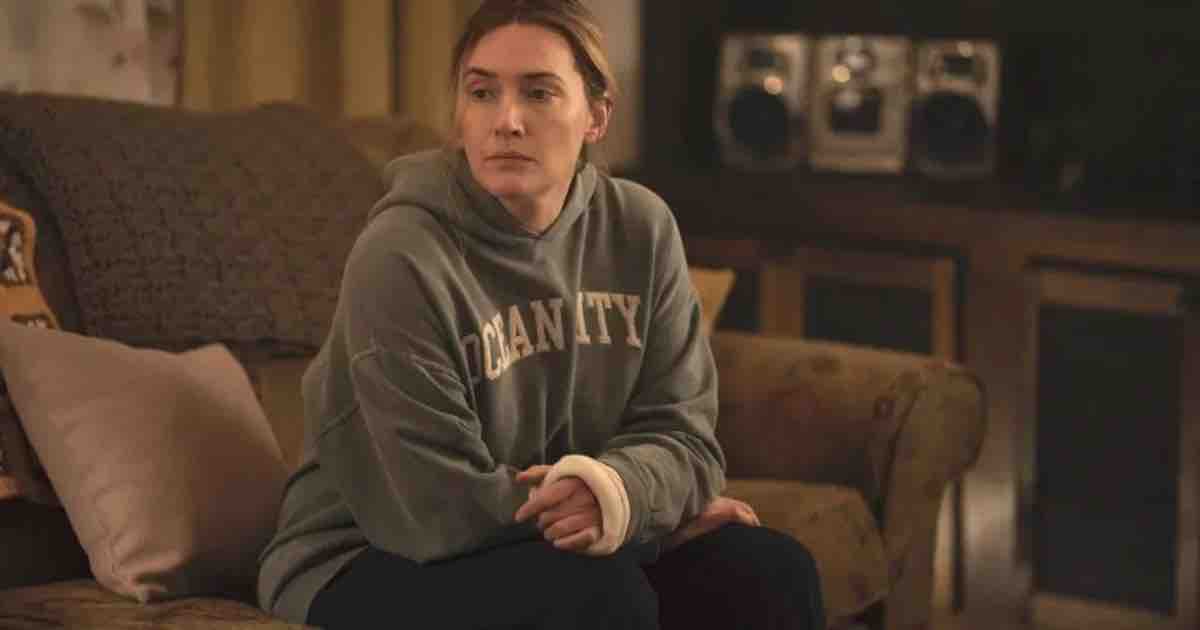
Craig Zobel’s HBO limited series Mare of Easttown is a crime drama where Mare Sheehan (Kate Winslet) is a detective sergeant in Easttown, Pennsylvania. The warm color palette displays Mare’s attempt to cope with the ongoing crisis and at the same time, strike a balance with her family.

